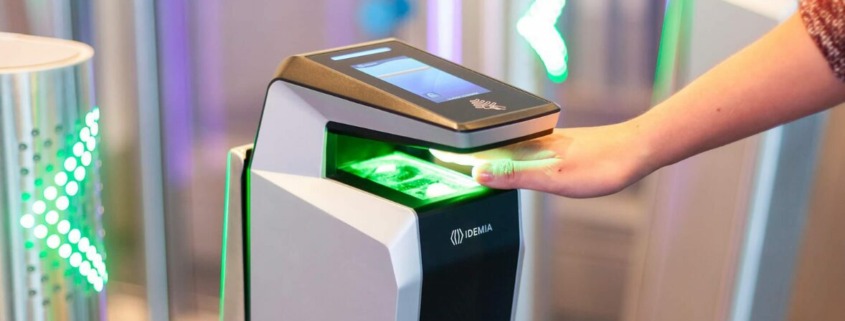MorphoWave™ SP and XP: a unique technology redefining contactless access control
When a simple gesture grants secure access, biometric technology enters a new phase. With MorphoWave™ SP and XP, IDEMIA offers a contactless alternative designed for environments where speed and accuracy are key.
As access to buildings becomes both a security matter and a matter of flow efficiency, traditional solutions are reaching their limits. The need for hygiene, convenience and responsiveness is growing. This is where MorphoWave™ technology stands out.
Contactless biometric access, down to a gesture
MorphoWave™ captures four fingerprints with a single hand wave—no physical contact, no hesitation. This intuitive process eliminates common bottlenecks: forgotten badges, worn-out readers, shared touchpoints.
The result? A seamless user experience, ideal for high-traffic areas like corporate offices, campuses, transportation hubs, and industrial facilities—where the rhythm of daily access demands smooth, reliable authentication.
Two models, two operational logics: SP or XP?
MorphoWave™ SP covers essential needs: up to 10,000 users, intuitive LED indicators, broad compatibility with card technologies (MIFARE, iClass, HID Prox…) and QR code scanning for visitor management.
MorphoWave™ XP is built for scale: up to 100,000 users, high throughput (up to 60 people per minute), a color touchscreen for more advanced interaction, and time & attendance functions for workforce tracking.
More than a product range, these are two strategic responses to distinct operational realities.
Integration designed for real-world systems
Both SP and XP readers integrate natively with over 25 access control platforms, support Ethernet and Wi-Fi connectivity, and can store up to one million event logs.
Thanks to this architecture, MorphoWave™ fits easily into existing infrastructures without adding complexity. Its native support for mobile credentials and QR codes ensures it adapts to modern workflows and visitor flows alike.
MorphoWave™ is not just about opening doors. It’s about redefining how people interact with access control systems: naturally, efficiently, and without friction.



